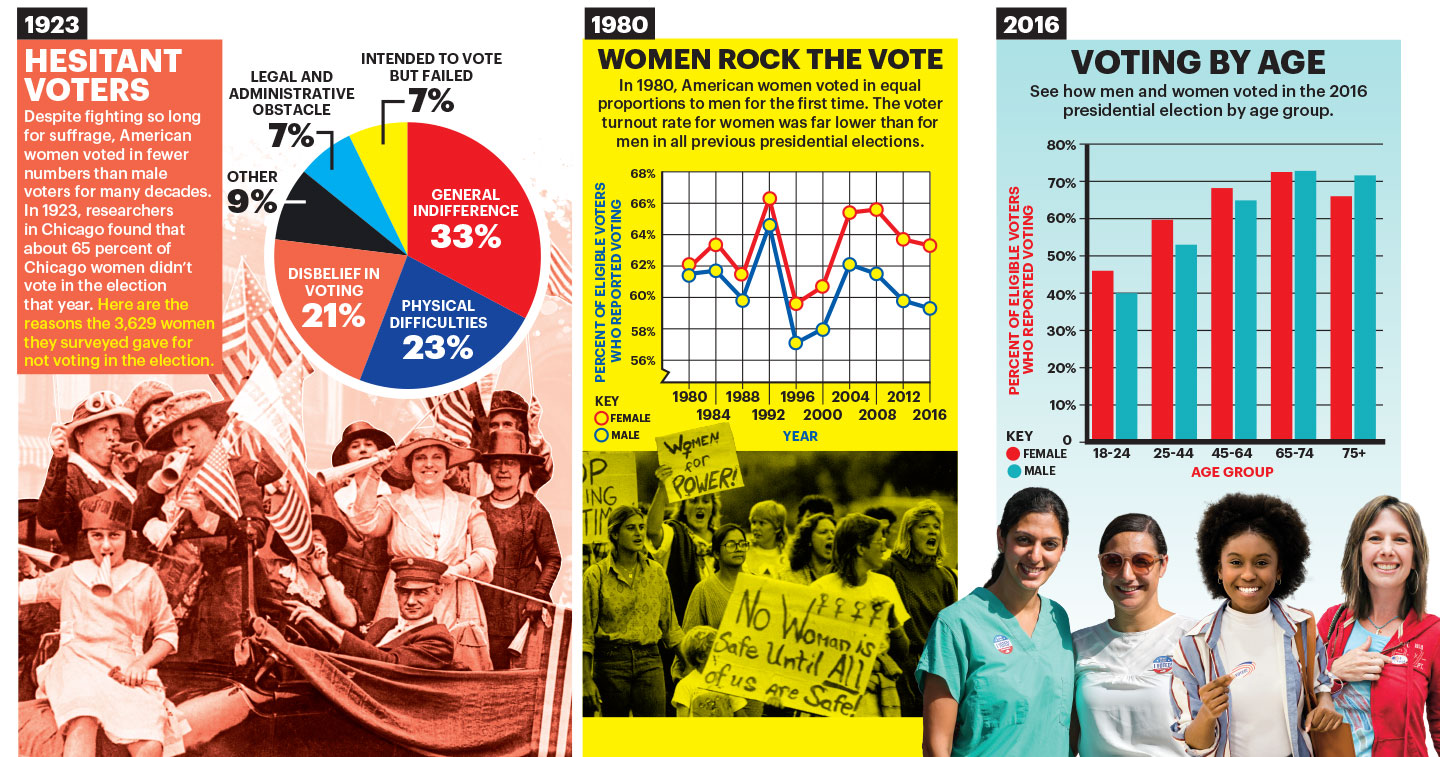CCSS: 6.SP.B.4, 6.SP.B.5, 7.SP.B.3, 8.SP.A.1, MP1, MP5, MP6
TEKS: 6.12A, 6.12B, 6.12C, 6.12D, 6.13A, 7.6G, 7.12A, 8.5C, 8.11A

STANDARDS
CCSS: 6.SP.B.4, 6.SP.B.5, 7.SP.B.3, 8.SP.A.1, MP1, MP5, MP6
TEKS: 6.12A, 6.12B, 6.12C, 6.12D, 6.13A, 7.6G, 7.12A, 8.5C, 8.11A
100 Years of Women's Suffrage
Every year, millions of women head to the polls to vote in local, state, and national elections. But this wasn’t always the case. This year marks the 100th anniversary of the ratification, or approval, of the 19th Amendment to the U.S. Constitution. It ensures that the right to vote cannot be denied on the basis of sex.
When the United States was founded in 1776, women had no say in how the nation was run. In 1848, the first public meeting on women’s rights was held in Seneca Falls, New York. It marked the start of the movement for women’s suffrage, or the right to vote. Activists such as Susan B. Anthony, Elizabeth Cady Stanton, Lucy Stone, and Alice Paul were some of the leaders in the fight. These women and their followers organized protest marches, gave speeches, and signed petitions demanding the right to vote.
“It was a long struggle,” says Paula Casey, a speaker on the women’s suffrage movement. “This was also the greatest nonviolent struggle in the history of our country.” Eventually, their efforts paid off. In 1920, women were finally guaranteed the right to vote. “What I think is interesting is that it took so long—72 years,” says Casey.
Women have come a long way since then in engaging with politics. Today, more women than ever are serving in the U.S. Congress. In the most recent presidential elections, women have voted in higher numbers than men.
Google Quiz
Click the Google Quiz button below to share an interactive version of the questions with your class. Click Download PDF for the non-interactive blank answer sheet.
Download PDF
Bettmann/Getty Images (suffragettes); Susan Biddle/The Denver Post via Getty Images (1980 protesters); Mario Houben/Newscom/ZUMA Wire (left two women); SDI Productions/E+/Getty Images (middle woman); David Jennings/Digital First Media/Boulder Daily Camera via Getty Images (right woman)
Answer the following questions using the information in the charts and graphs above. Record your work and answers on our answer sheet.
Which presidential election year had the greatest percent of women voters?
A. 1980
B. 1992
C. 2008
D. 2016
Which age group had the highest percent turnout in the 2016 presidential election?
A. 25-44
B. 45-64
C. 65-74
D. 75 and older
In which presidential election year did about 61 percent of eligible women vote?
A. 1980
B. 1984
C. 1992
D. 2000
Which age group had the greatest difference between male and female voters in 2016?
A. 18-24
B. 45-64
C. 65-74
D. 75 and older
About how many more women said they did not vote in Chicago’s 1923 election because of physical difficulties than legal and administrative obstacles?
A. 254
B. 327
C. 508
D. 581
What was the approximate difference between the percent of women and men who voted in 2016?
A. 1%
B. 2%
C. 4%
D. 5%
Write a ratio comparing the percent of Chicago women who intended to vote but failed to those who didn’t believe in voting.
About 107 million women were eligible to vote in 2008. About how many voted that year?
In 2016, about 6.2 million women aged 18-24 voted. How many women were eligible to vote that year, rounded to the nearest million?
Poll your class on which graph surprised them the most. Customize your own poll using the Google form below. Then make a circle graph of the results.